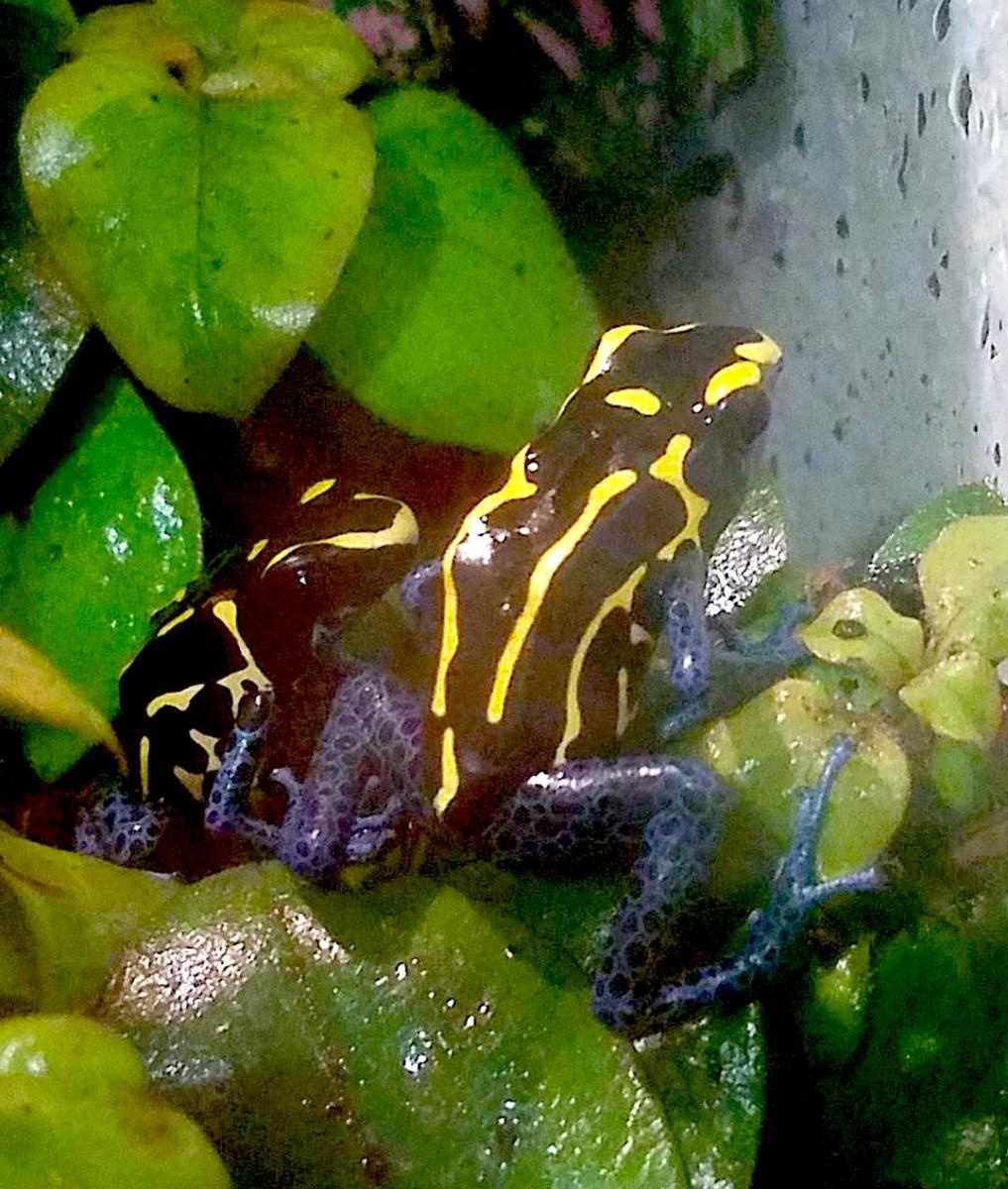Basic Care: Poison Dart Frogs
Poison dart frogs are relatively difficult to care for and are not recommended for beginners. Moreover, the term "poison dart frog" encompasses many species and subspecies, which will each have their own individual needs. Please read trustworthy guidelines for your species and subspecies of frog for more specific guidelines.
CAGING
The layout of your cage should be tailored to the specific type of poison dart frog. Terrestrial species require more ground space than height. Arboreal species require tall enclosure with multiple platforms and plant levels. Semi-arboreal species prefer a combination. For some species of dart frog, multiple frogs may be housed together. However, aggression may occur in any species of poison dart frog and is very common in some species. Reduce aggression by separating into sexed pairs. As far as vivarium size, we recommend at least 5 gallons per frog and a minimum of 10 gallons even if you only have 1 frog.
Frogs also have very specific temperature and humidity requirements. As a general rule, poison dart frogs tolerate a temperature range of 65 F-80 F. Most species do best in the low to mid 70s.Temperatures over 85F are dangerous. Most poison dart frogs prefer a humidity range of 80-100% but can tolerate humidity down to 50% for short periods of time if the frogs have access to water. Low humidity levels, especially without access to water, can quickly be fatal. However, every species is different based on their native environment, so it is very important to research temperature and humidity guidelines for your specific subspecies.
 WATER
WATER
Use chlorine- and chloramine-free water such as bottled spring water, charcoal-filtered tap water or tap water that has been aerated for at least 48 hours. You can also purchase water dechlorinating water conditioners. To protect the biofilter of your tank, perform 50% water changes and never 100% water changes. Perform water changes at least once a week and consult a veterinarian about water testing.
DIET
Poison dart frogs eat insects. Most poison dart frogs prefer smaller foods. Any poison dart frogs should readily eat Drosophila melanogaster fruit flies. Frogs large enough (~1 inch) should do well with Drosophila hydei fruit flies and pinhead crickets. They can also snack on the springtails and isopods that can be used to help maintain a bioactive vivarium. All feeder insects should be dusted with vitamin/mineral supplements. We recommend Vitamin A twice monthly and Calcium on the rest of their meals. Repashy is an example of a high-quality supplement. It is ideal to gut load insects, as well.
MEDICAL PROBLEMS
Amphibians may become very ill quickly if they do not receive prompt medical attention. You should consult with your veterinarian if any of the following problems are noted with your frog:
- loose stools
- little or no stool production
- weight loss
- poor appetite
- listlessness or inactivity in a normally active frog
- cloudy eyes
- reddish discoloration of the belly skin or legs
- swelling on the head, body or legs
- swollen abdomen
- difficulty breathing

